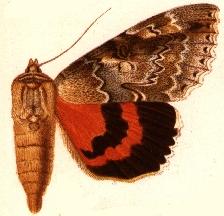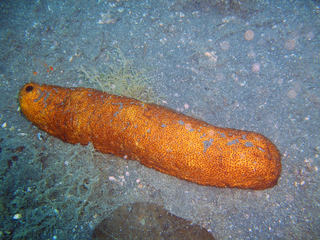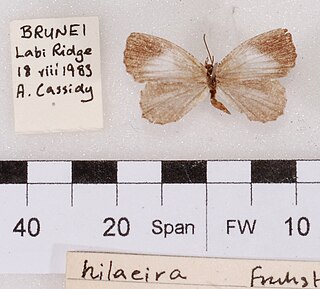
The marbled cat is a small wild cat native from the eastern Himalayas to Southeast Asia, where it inhabits forests up to an elevation of 2,500 m (8,200 ft). As it is present in a large range, it has been listed as Near Threatened on the IUCN Red List since 2015.

Clemmys is a genus of turtles currently containing a single extant species, the spotted turtle (Clemmys guttata).

The western pond turtle, also known commonly as the Pacific pond turtle is a species of small to medium-sized turtle in the family Emydidae. The species is endemic to the western coast of the United States and Mexico, ranging from western Washington state to northern Baja California. It was formerly found in Canada, but in May 2002, the Canadian Species at Risk Act listed the Pacific pond turtle as being extirpated.

Cutis marmorata telangiectatica congenita is a rare congenital vascular disorder that usually manifests in affecting the blood vessels of the skin. The condition was first recognised and described in 1922 by Cato van Lohuizen, a Dutch pediatrician whose name was later adopted in the other common name used to describe the condition – Van Lohuizen syndrome. CMTC is also used synonymously with congenital generalized phlebectasia, nevus vascularis reticularis, congenital phlebectasia, livedo telangiectatica, congenital livedo reticularis and Van Lohuizen syndrome.

The giant mottled eel, also known as the marbled eel, is a species of tropical anguillid eel that is found in the Indo-Pacific and adjacent freshwater habitats.
The elm cultivar Ulmus 'Marmorata' was identified by Dieck, Zöschen, Germany in Haupt-catalog der Obst- und gehölzbaumschulen des ritterguts Zöschen bei Merseburg 1885 as Ulmus campestris marmorata. Considered "probably U. carpinifolia" by Green.
Nanohyla marmorata is a species of frog in the family Microhylidae. It is found in Laos and Vietnam. It is not considered threatened by the IUCN.

Scaphiophryne marmorata is a species of frog in the family Microhylidae. It is commonly known as the green burrowing frog and the marbled rain frog. It is endemic to Madagascar. It is classified as "Vulnerable" by the IUCN as it is threatened by habitat loss.

Nannophrys marmorata, commonly known as Kirtisinghe's rock frog or marbled streamlined frog, is a species of frog endemic to Sri Lanka. It used to be placed in the large frog family Ranidae but a phylogenetic study was undertaken using DNA sequences and it is now included in the family Dicroglossidae. Its natural habitats are tropical moist lowland forests, moist montane forests, rivers and streams. It is threatened by habitat loss.

The marbled electric ray is a species of electric ray in the family Torpedinidae found in the coastal waters of the eastern Atlantic Ocean from the North Sea to South Africa. This benthic fish inhabits rocky reefs, seagrass beds, and sandy and muddy flats in shallow to moderately deep waters. It can survive in environments with very little dissolved oxygen, such as tidal pools. The marbled electric ray has a nearly circular pectoral fin disc and a muscular tail that bears two dorsal fins of nearly equal size and a large caudal fin. It can be identified by the long, finger-like projections on the rims of its spiracles, as well as by its dark brown mottled color pattern, though some individuals are plain-colored. Males and females typically reach 36–38 cm (14–15 in) and 55–61 cm (22–24 in) long respectively.

Actinemys is a small genus of turtles in the family Emydidae. The genus is endemic to the west coast of North America. The genus contains two species.

Piramide is a station on Line B of the Rome Metro. It was opened on 10 February 1955 and is sited on Piazzale Ostiense just outside Porta San Paolo, in the Ostiense quarter. Its atrium houses mosaics that have won the Artemetro Roma by Enrico Castellani (Italy) and Beverly Pepper. The station has escalators.

Catocala marmorata, the marbled underwing, is a moth of the family Erebidae. The species was first described by William Henry Edwards in 1864. It is found in the United States from Vermont to South Carolina and west to Indiana and Illinois.

Bohadschia marmorata, commonly known as the brown sandfish or chalky cucumber, is a species of sea cucumber in the family Holothuriidae. It lives on the seabed in shallow waters in the Indo-Pacific region.
Mesocolpia marmorata is a moth in the family Geometridae. It is found in Nigeria and Sierra Leone.

Callechelys marmorata, also known as the marbled snake eel, is a benthic marine fish belonging to the family Ophichthidae which refers to serpentine in shape fishes.
Haploparmena angolana is a species of beetle in the family Cerambycidae. It was described by Per Olof Christopher Aurivillius in 1913 and is known from Angola.

Logania marmorata, the pale mottle, is a butterfly in the family Lycaenidae. It was described by Frederic Moore in 1884. It is found in the Indomalayan realm.

Stamnodes marmorata is a species of geometrid moth in the family Geometridae. It is found in North America.

Amanita marmorata is a species of Amanita found in South Australia













